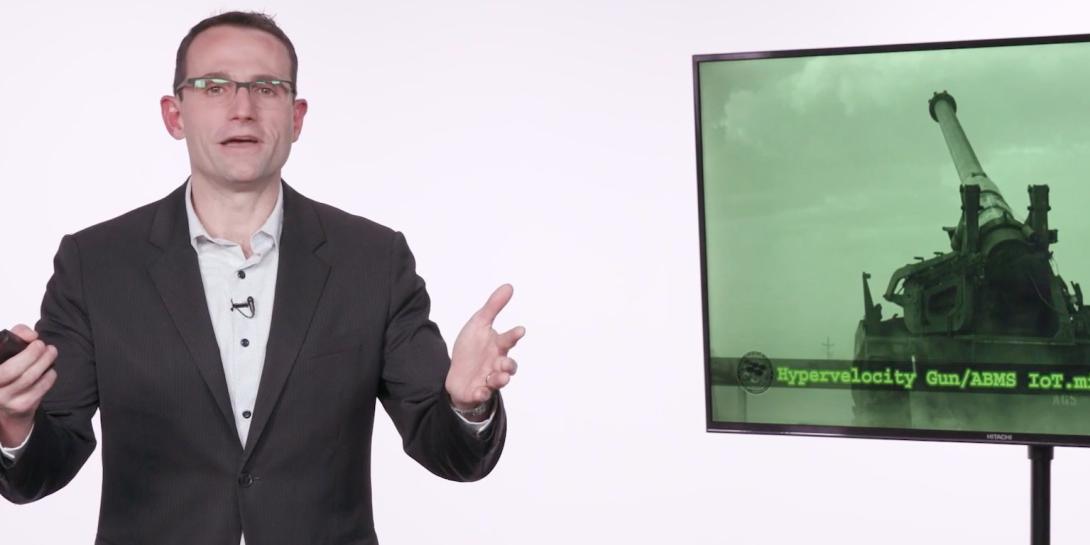Air Force Expands Its Pursuit of E-Systems
The U.S. Air Force is pursuing a bold new strategy of digital transformation across the service’s acquisition lifecycle. Essentially, it is applying electronic systems, known as e-systems, to every part of a weapon’s or system’s acquisition process, including design, engineering, software, manufacturing, testing and sustainment efforts. These so-called digital threads will speed innovation, reduce risks and program costs.
Underpinning any e-system is the digital trinity of digital engineering and management; agile software development; and open architecture, explained Will Roper, assistant secretary of the Air Force for acquisition, technology and logistics. And e-systems are so much more than computer-aided design, or CAD.
“We are going to have to be able to do a lot digitally that once occurred in the physical world….[for] that e-satellite, that e-plane, or e-weapon,” he said. “It is not like the CAD model of the past.”
Roper contends that the digital environments will be the foundational layer that allows the U.S. military to bring in artificial intelligence at scale.
The assistant secretary spoke to the press yesterday at the Air Force Association’s virtual Air, Space and Cyber 2020 conference and released his related guidance, Take the Red Pill, The New Digital Acquisition Reality.
Roper is asking the service’s defense acquisition employees—and indeed, the broader community—to take the time to understand the service’s pursuit of Air Force and Space Force digital acquisition and e-systems. The 20-page guidance document maps out terms, best practices and measurements of success, including the core idea of digital threads.
“Digital threads are extensible analytic frameworks to ‘connect’ models and all associated data, software and functional support, governing more than one system lifecycle phase with one-to-one real-world traceability,” the document stated. In comparison, digital twins, which are an electronic replica, “may or may not be governed by a full digital thread.”
The service’s intent is to take the initial success seen from the only three defense programs that are already employing digital transformation in some fashion: the T-7A Red Hawk training aircraft; the Ground Based Strategic Deterrent; and the Next Generation Air Dominance (NGAD). The NGAD project for the service’s latest secret airplane—which is currently a full-scale flight demonstrator the service has flown and has “broken records”—is the only one that is embracing the full digital acquisition model through its entire lifecycle, Roper explained.
The assistant secretary has presented various option levels to service leaders and now it is a “money question” for them to decide what to pursue.
The ability to systematically—and on a large scale—design, assemble, test and sustain a weapon, aircraft or system in the digital world first will have “profound” implications, Roper asserted. “These living, breathing models provide unprecedented power to create and troubleshoot.”
Aspects of an e-system could be developed concurrently in the digital world, providing key insights into the real-world applications. Digital threads will lessen the learning curve across all processes. Also, the risks of integrating a system, which is usually an involved process, would decline substantially.
Through digital engineering, the service, which spends a good portion of its funding on operation and maintenance, would be able to instead put some of those funds into research and development, flipping the balance, Roper contended, greatly improving the innovative capabilities the military desperately needs to face near-peer adversaries in the future.
The assistant secretary clarified that the digital lifecycle “must become as real as the physical one,” and that ultimately the e-system would become the priority (and sit first chair). He stressed that the service would have to put in place stringent measures for the application of e-systems to succeed. “We will have to have rigorous standards for doing this,” the assistant secretary emphasized. “There is a lot you can get wrong. The computers and the automation do not turn off the need for strategic thinking."
In addition, Roper cited the experience of Formula One racing and the microelectronics industry in successfully employing digital transformation as “lighthouses” from which the military can learn best practices.
“Today, there are no prototypes in Formula One,” he explained. “Every aspect of future cars, from parts to assembly, to the complicated physics of material interactions, engine combustion and even tire deformation; to maintenance across a grueling racing season—is meticulously modeled. These models interconnected from upfront supplier specifications to backend logistics form one digital thread. And this digital thread is used to e-create millions of e-cars in pursuit of a winning design.”
As such, the service can greatly benefit from applying Formula One-types of e-systems.
“And should we choose to build a physical prototype, and should we need to build a physical prototype, like we did with NGAD, the digital thread has value forever,” Roper said. “It will continuously live and breathe throughout the lifecycle, because the model is so high fidelity, it can be a substitute in many respects for the physical system itself. That is what provides the speed and acceleration that we have so desperately needed.”





Comments